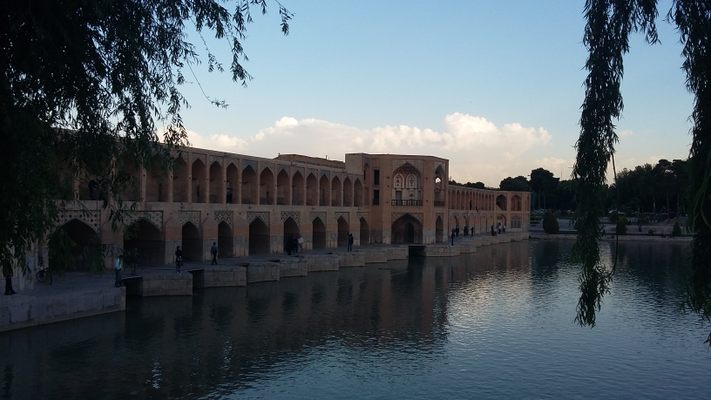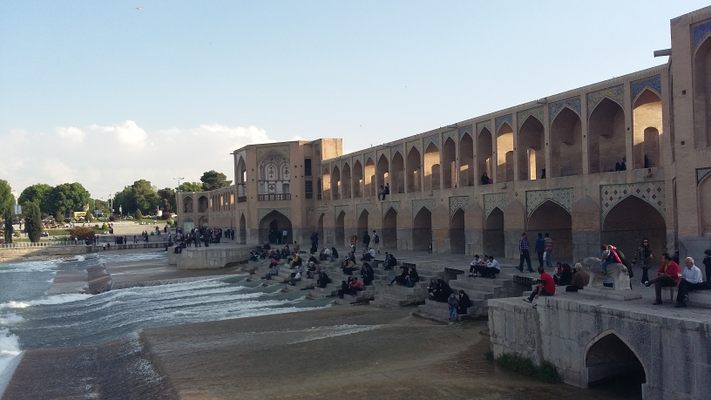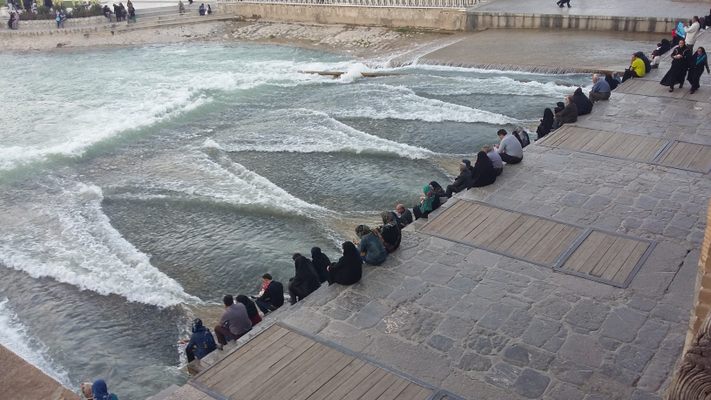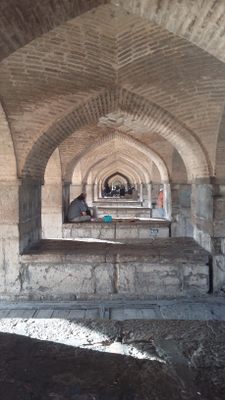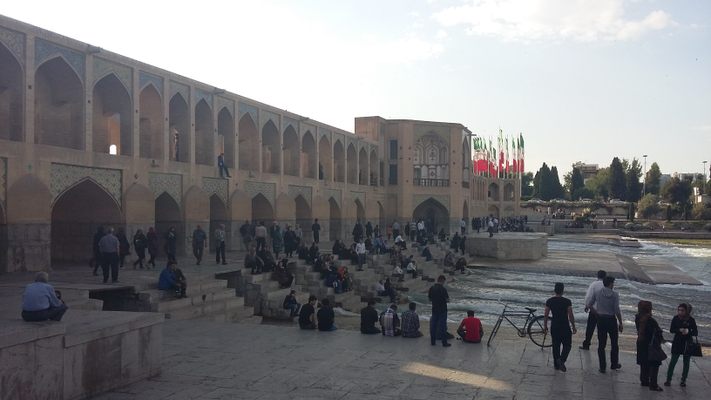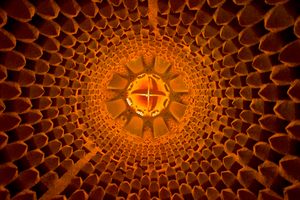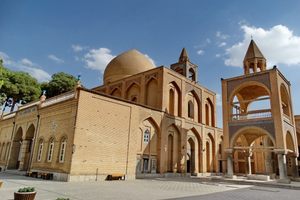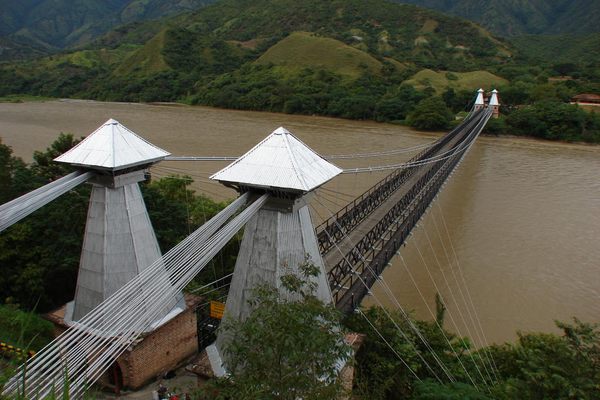About
It's easy to see why this centuries-old structure was deemed Isfahan's finest bridge. During the day, sunlight bathes its tiled facade. After dusk, lights illuminate its arches, filling the caverns with a warm, fiery glow.
Zayandehrud River, starting in the Zagros Mountains, flows nearly 250 miles across the Iranian Plateau before ending in the Gavkhouni swamps. Humans have lived along its banks for thousands of years, with the earliest evidence of their settlements dating back to the sixth millennium. One of these settlements prospered and eventually became Isfahan.
Isfahan’s fortunes changed dramatically many times along its tumultuous history. Renowned explorer and scholar Ibn Battuta visited the city in 1327 and described it as “the largest and fairest of cities, but it is now in ruins,” hinting at its former glory. However, three centuries later, Isfahan began rising again, in what can aptly be described as the city’s golden age, when Shah Abbas I (who reigned from 1588 to 1629) made it the capital city of the empire and Shah Abbas II (who reigned from 1642 to 1666) oversaw its rebuilding.
This was a time when Isfahan became one of the largest and most beautiful cities in the world. As Persian culture was flourishing, so was its architecture. Among the many outstanding accomplishments of this era is Khaju Bridge, which connects the Khaju and Takhte Foolad quarters across the Zayanderud River.
The exact date of Khaju Bridge’s completion is not recorded, but it’s known that it was built on top of an older bridge around 1650. The structure consists of 23 stone arches. It’s about 430 feet long and nearly 40 feet wide, and it functions as both a bridge and a weir. The sluice gates built under the archways are still used to these days to regulate the flow of the Zayanderud River for irrigation.
The upper part of Khaju Bridge consists of a large central aisle originally designed for horse-drawn carts flanked on either side by a pedestrian sidewalk. The ingenious interplay of vaults and inlets provides an intricate pattern through which air cools down, providing pedestrians with pleasant temperatures even during the hottest months of the year. Halfway through the bridge is a split pavilion, half looking upstream, and half looking downstream. It’s recorded that Shah Abbas II once sat in the pavilion to admire the beauty of the river snaking through the city.
You can still see original geometric tilework and paintings along Khaju Bridge, which is now used mainly as a place for relaxing and socializing.
Related Tags
Know Before You Go
Khaju Bridge is located in the historical centre of Isfahan, connecting Khajoo Square in the north and Feyz Boulevard in the south.
Community Contributors
Added By
Published
May 17, 2019



